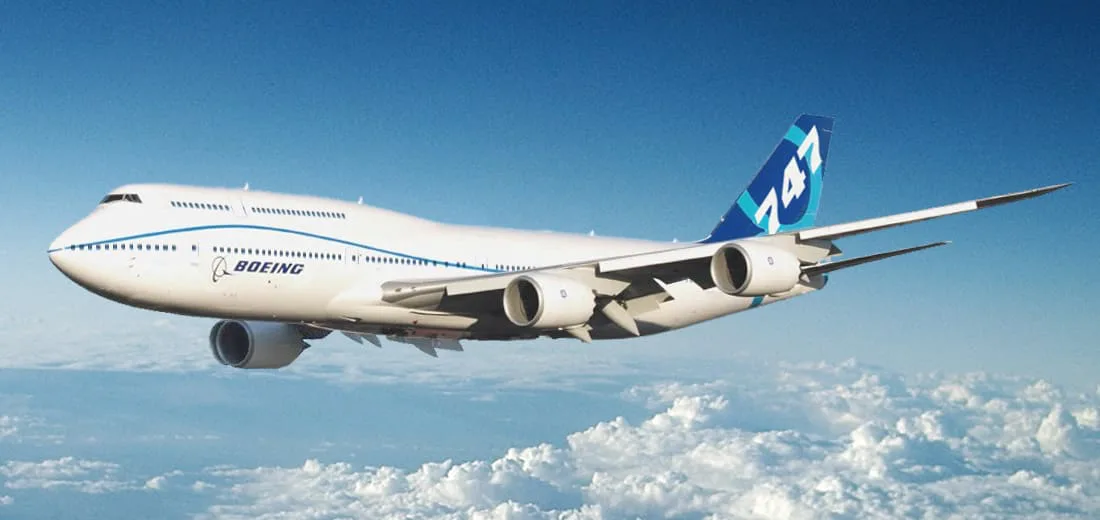
The Boeing 747, often referred to as the “Queen of the Skies,” has been a cornerstone of international air travel for decades. Since its introduction, the 747 jumbo jet has transformed the aviation industry with its immense passenger capacity, innovative design, and versatile capabilities.
From its origins as a revolutionary passenger aircraft to its current role in various specialized functions, the Boeing 747 continues to be a vital part of global air travel. This blog post dives into some lesser-known facts about the Boeing 747, highlighting its unique features, history, and impact.
Fascinating Facts About the Boeing 747
1. The 747 Was the World’s First Jumbo Jet:
The Boeing 747 was the first aircraft to be classified as a “jumbo jet,” thanks to its size and capacity. When it entered service in 1970, it was a game-changer in the aviation industry, offering a significant increase in passenger capacity compared to previous aircraft.
2. Originally Designed for Cargo:
Interestingly, the 747 was initially conceived as a cargo aircraft. The iconic humpbacked design, including the Pratt & Whitney engines, allowed the cockpit to be placed above the main deck, enabling a full-length cargo hold. This design also featured a unique nose cargo door, enhancing the aircraft’s cargo handling capabilities.
3. The 747’s Extended Upper Deck:
One of the most recognizable features of the Boeing 747 is its extended upper deck. Initially, this area was used as a luxurious lounge space for passengers. However, as air travel demand grew, the space was converted into additional seating, increasing the aircraft’s passenger capacity. This design also contributed to the aircraft’s distinctive hump.
4. The 747-8: The Latest and Greatest:
The Boeing 747-8 is the latest and largest variant of the Boeing 747 family. This version, which includes the 747-8 Freighter, boasts a longer fuselage, improved aerodynamics, and more fuel-efficient engines. The 747-8’s flight deck is equipped with state-of-the-art technology, making it one of the most advanced aircraft in the skies today.
5. Setting Records for Passenger Capacity:
When the Boeing 747 first entered service, it could carry more passengers than any other aircraft. This capability made it a favorite for long-haul international flights, as airlines could transport a large number of passengers efficiently. The 747’s capacity to accommodate more passengers than any other aircraft at the time helped lower the cost per seat, making air travel more accessible.
6. Built at the Iconic Everett Factory:
The Boeing 747 was built at the Everett Factory in Washington, which remains the largest building in the world by volume. This facility was specifically constructed to accommodate the massive size of the 747 and the complex assembly process. The factory continues to be a hub for Boeing’s wide-body aircraft production.
7. The 747’s Versatile Landing Gear:
The Boeing 747’s landing gear is designed to handle the aircraft’s immense weight and ensure safe takeoffs and landings. The gear includes 16 main wheels and two nose wheels, providing stability and support. This robust landing gear system is essential for operating at major international airports around the world.
8. Innovations in the Flight Deck:
The Boeing 747 introduced several advancements in flight deck technology. Over the years, the cockpit has evolved from analog instruments to digital displays, significantly improving pilot situational awareness and safety. The 747-8 features a glass cockpit with advanced avionics, making it easier for pilots to manage the aircraft’s complex systems.
9. Special Roles Beyond Passenger Travel:
The Boeing 747 has been adapted for numerous specialized roles. For example, it serves as the Air Force One in the United States, transporting the President. Additionally, the 747 Large Cargo Freighter, also known as the Dreamlifter, transports large aircraft components. The aircraft’s size and range make it ideal for various missions beyond commercial passenger service.
10. The 747’s Unique Nose Cargo Door:
One of the unique features of the Boeing 747 Freighter models is the nose cargo door. This door allows the aircraft to be loaded with oversized cargo that wouldn’t fit through standard side doors. This feature has made the 747 an invaluable asset for transporting large and heavy items around the world.
11. Competing with the Airbus A380:
The Boeing 747’s main competitor in the jumbo jet market is the Airbus A380. While the A380 surpassed the 747 in terms of passenger capacity, the 747 has remained popular due to its versatility, including its ability to serve both passenger and cargo markets. The 747-8’s advancements in fuel efficiency and technology continue to make it a viable option for airlines.
12. The 747 and the Evolution of Fuel Efficiency:
The Boeing 747 has continuously evolved to become more fuel-efficient. The 747-8, in particular, features advanced engines and aerodynamics that reduce fuel consumption and emissions. These improvements have made the 747 more environmentally friendly and cost-effective for airlines.
13. A Lasting Legacy in Aviation:
The Boeing 747’s impact on aviation cannot be overstated. It revolutionized air travel, making long-haul flights more accessible and affordable. Its legacy continues as newer models like the 747-8 take to the skies. Even as the industry evolves, the 747 remains a symbol of innovation and excellence in aviation.
Conclusion
The Boeing 747 has had a profound influence on the aviation industry, changing the way people and goods move around the world. From its role as a pioneering passenger aircraft to its specialized adaptations, the 747 continues to be a vital part of air travel. As we look to the future, the 747’s legacy of innovation and excellence will undoubtedly continue to inspire new generations of aircraft design and technology.

